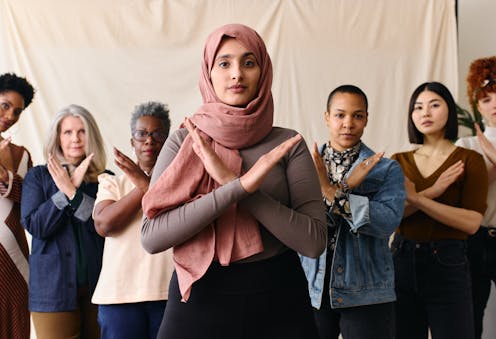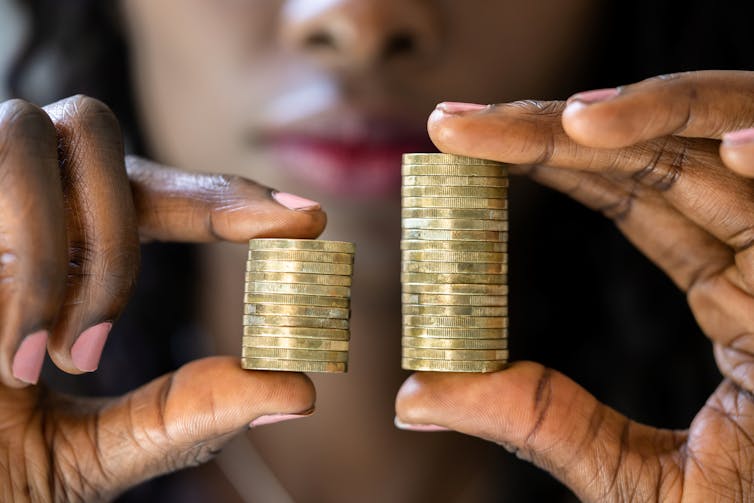
International Women’s Day occurs yearly on March 8. The United Nations argues that international days are powerful tools for advocacy, awareness and action. On women’s rights and equality issues, action and awareness are badly needed, at home in Canada and around the world.
But does International Women’s Day actually accomplish anything? Are these types of public recognition events helpful? What can governments do better on this front?
One danger of international observances is they can become window dressing where the symbolic action of one single day covers for unsubstantive efforts on the other 364 days of the year.
This year’s celebrations may seem exaggerated, or even performative, when juxtaposed against governments’ political records on gender issues. In 2022, the U.S. Supreme Court removed constitutional guarantees of reproductive freedom with the repeal of Roe v. Wade.
In Canada, rates of domestic violence and femicide have increased over the past few years, with some calling it the shadow pandemic alongside COVID-19. Little has been done on the national action plan to end violence against Indigenous women in Canada.
Read more: Canada's shadow pandemic: Femicide
Most countries still have gender pay equity gaps. The World Economic Forum’s 2022 Global Gender Gap Report estimates there has been a generational loss in women’s equality worldwide as a result of the pandemic, and this is being compounded by the current cost-of-living crisis.
These alarms are being sounded by other international organizations too, including the UN.
Canadians support gender equality
The dire need to address problems facing women is reflected in Canadians’ attitudes too — especially women’s attitudes. There is clear dissatisfaction with current conditions and an appetite for the government to do more to advance gender equality.
Data from the 2021 Canadian Election Study revealed that 31 per cent of women and 17 per cent of men believe women face a lot, or a great deal of, discrimination in Canada.
Consistent with this, 64 per cent of women and 49 per cent of men believe more, or much more, should be done for women to eradicate discrimination.

Seventy per cent of women and 60 per cent of men believed the federal government should spend more on affordable housing. Fifty-one per cent of women and 44 per cent of men said the federal government should spend more on the national child care plan.
Not only do Canadians generally support greater government action, but women’s personal experiences of inequality or group-based solidarity with other women who have faced these experiences sensitize them to the need for greater action.
‘Every Woman Counts’
This year, the Canadian government’s theme for International Women’s Day is “Every Woman Counts.”
The digital toolkit designed for the campaign features women from different racialized communities against a backdrop of different coloured squares, together with a variety of links to resources such as the Women of Impact Gallery and Heritage Minutes on “inspiring Canadian women.”
These are all interesting and useful resources, but do they speak to the everyday challenges women face? Issues including economic well-being, health care access and reproductive care, sexism, sexual assault and other forms of gender-based violence, and gendered forms of racism and anti-Indigenous prejudice?
In other words, in celebrating the impressive heights that select women — albeit from many different backgrounds — have achieved, how does the campaign speak to the millions of women across the country and their daily policy needs?
How is the message translatable into action? What does it even mean to say that every woman “counts”? Counts for what? For whom? And what obligations or entitlements does this imply?
Symbolic value
On its own, International Women’s Day does not directly seek to produce substantive action toward the goal of greater gender equality, just as Earth Hour on the last Sunday night of March does not and is not meant to directly halt environmental degradation.
International Women’s Day, Earth Hour and other days of acknowledgement have symbolic value. These international observances recognize challenges facing marginalized groups or society as a whole, draw attention to them and create unity and mobilization around those problems.
This is consistent with the origins of International Women’s Day in leftist movements, parties and governments, for whom secular communal holidays were important, especially for “the solidification of a sense of community.”
International Women’s Day provides a focus point, a rallying call and important recognition. How these get translated into direct action is a difficult task, but one that a symbolic day cannot be expected to surmount.
Elizabeth Goodyear-Grant receives funding from the Social Sciences and Humanities Research Council
This article was originally published on The Conversation. Read the original article.







